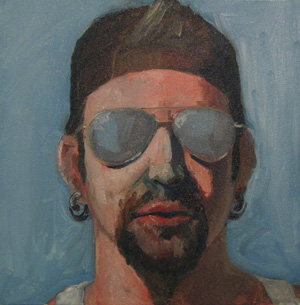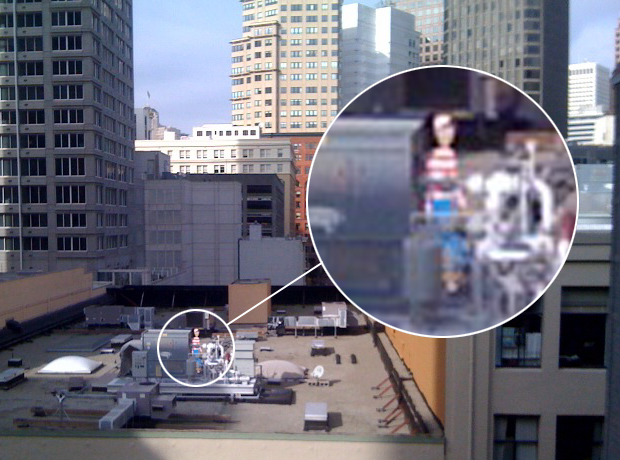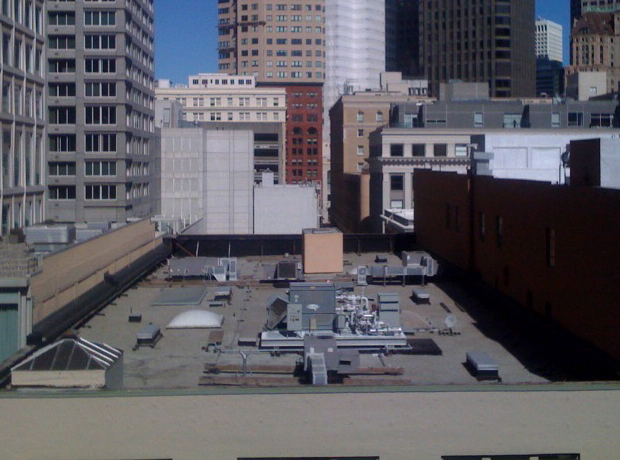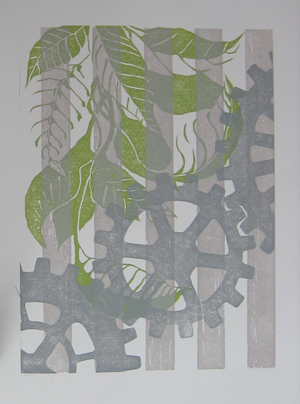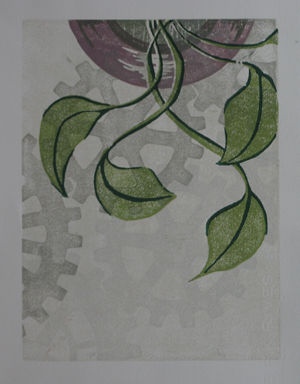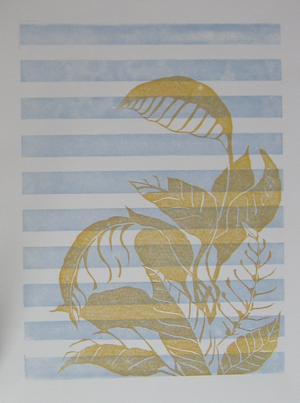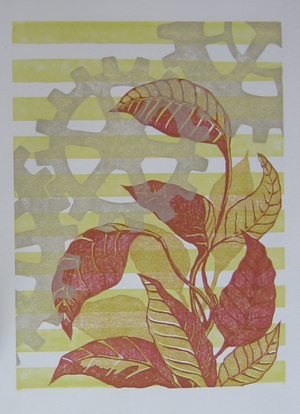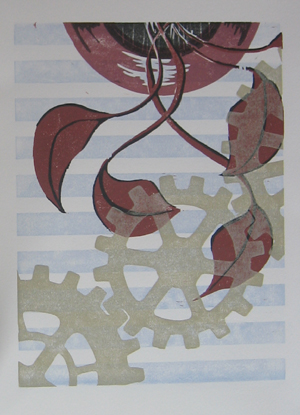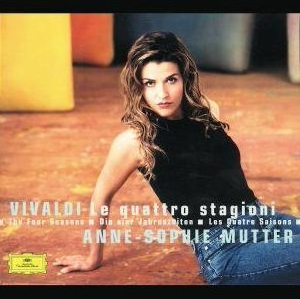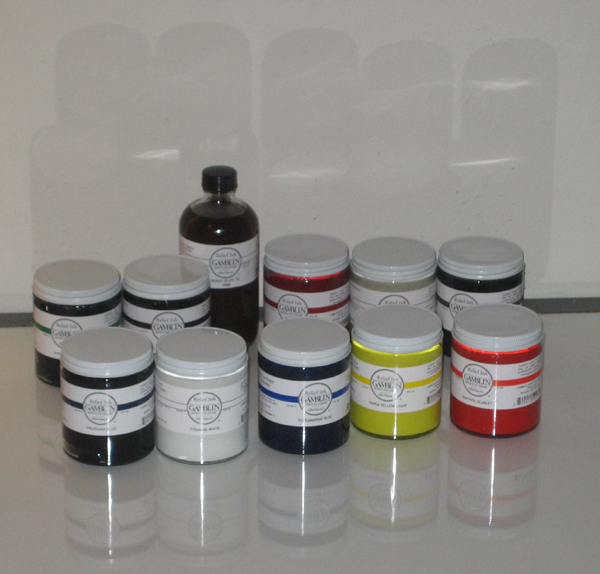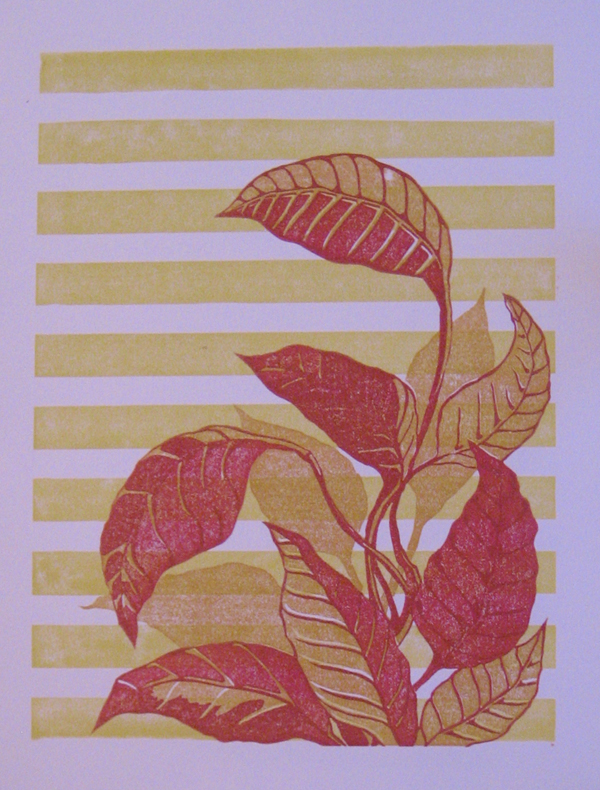Yes, I have a free print to give away to somebody, just read to the end [update, 11:38am, Jason claimed the print, thanks for giving it a good home!].
It’s a weird abstract thing. Hope you like it.
But first, a short journey into the studio…
Take one big mess…
After a weekend of printing, my ink palette looks like this:
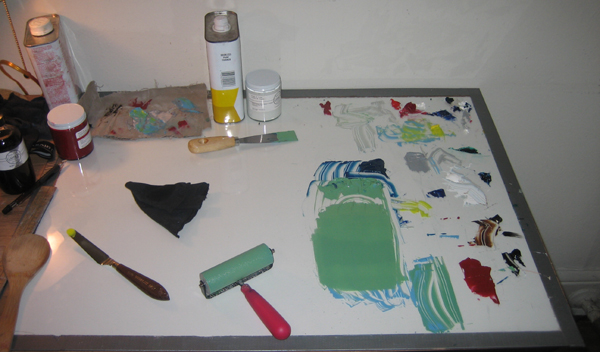
After a weekend of printing, I have bits of various colors, all partially used.
I have dabs of ink everywhere, and I keep a dollop of every color mixed, in case I use it again. The ink is left out overnight from Saturday to Sunday, 1 day isn’t enough for the ink to dry. It usually takes at least 2 days for the ink to develop a skin.
When I finish printing on Sunday, I scrape off all the unused ink and throw it away, because it will have started to harden by Wednesday, the next day I have any time to print.
Usually, quite a bit of ink gets thrown in the can.
Nothing wasted. Kinda..
I found 1 last use for this ink however.
I masked off the edges of a sheet of paper with painters tape, like so:
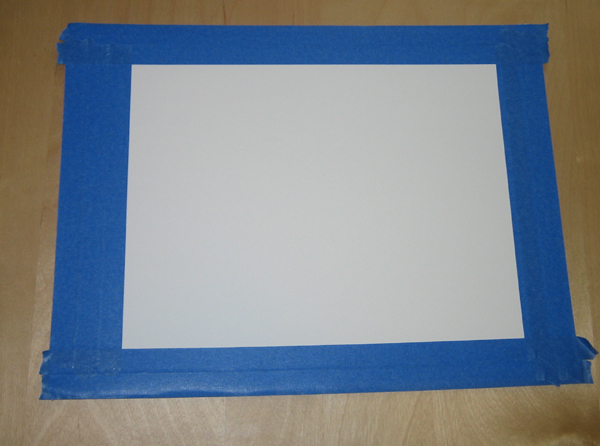
The tape protects the margins of the paper from the ink
Lesson learned: painters tape isn’t the best choice when working with this paper (Rives BFK). The tape sticks a bit to the cotton rag, and roughs up the paper when the tape is removed.
Next, roll out all of the ink left on my palette to one big flat mess, and plop the masked paper down on it.
Rub the back of the paper to transfer the ink, then removed the paper from the palette:
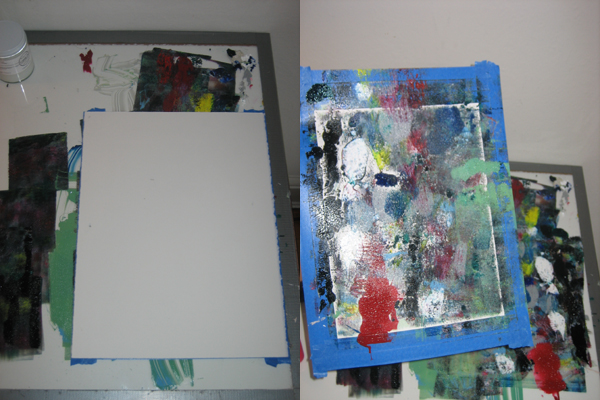
Left: the paper is pressed against the ink palette; Right: the paper, after it is removed from the ink surface
The ink left on my palette is a huge mess! This ended up taking more time to clean up than usual.
Moving on, I remove the tape masking the edges of the paper, and end up with an interesting monoprint:
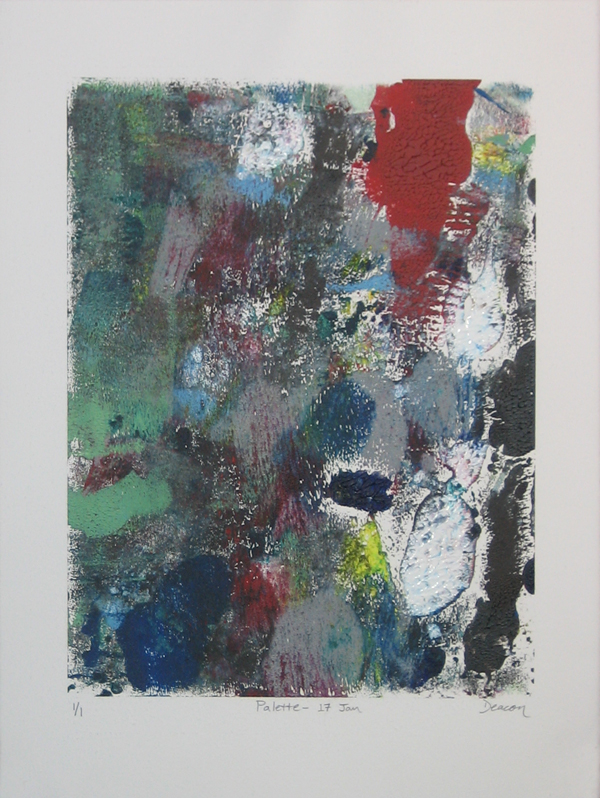
Palette-17 Jan, monoprint, paper size: 11x15, image size approximately 9x12
A Monowhat?
A monoprint is made by painting ink on a plate of some sort. Glass and metal plates are commonly used, but a flat plate of any material will work.
The plate, with the hand applied ink, is pressed against paper to transfer the image. Usually, only one print is made from each design painted on a plate. Most of the ink transfers to the paper, and needs to be re-applied by hand.
Each monoprint is unique. They are usually labeled as 1/1 in the bottom left corner, meaning it is the first print out of a total of 1 made, an edition of 1.
Monoprinting is a method “in between” painting and printing. All printmaking processes have two characteristics in common:
- Ink is applied to an element of some sort (metal plate, woodblock, limestone, silkscreen, etc), then transferred to the paper
- The process is repeatable, allowing identical images to be made
Monoprinting has one of these characteristics, the ink is applied to a plate, and transferred to the paper, but not the other. Since the ink is applied by hand, without mechanical control of where the ink is applied, each iteration cannot be duplicated.
It borrows from both painting and printmaking to form a new, unique medium.
Free Monoprint (only 1 available)
This print was an experiment, and a way to have some fun after a long weekend of printing. The resulting abstract print speaks for itself — however it is up to you to interpret what it says.
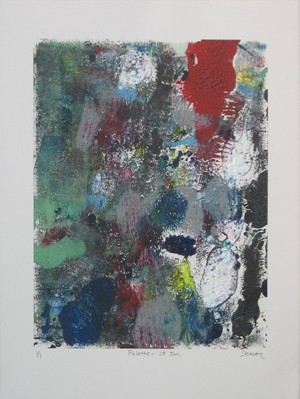
Only 1 available
I played with the ink, and asked myself what will happen when I mix all my leftover colors, and is more a product of chance than of forethought.
This print documents a weekend of work on the 101 Woodblock Print Project, and is a companion piece (of sorts) to the larger project. For me, the “meaning” in this print is the history and documentation of the work I am doing on the larger overall project.
Do you like the image? I’ll put this in an envelope and send it to the first person that sends me an email requesting it and includes their address. I’ll pay for shipping. All you have to do is make the request. To make this easier, I’ve got a contact page.
I’ve only got one of these, so it is first come, first serve.
[Update: Jason beat you to the punch! The print has been claimed]
My Artist’s Cerebral Struggles
This isn’t the kind of artwork I usually make, which is why I am giving it away. This monoprint is the result of following a process largely relying on chance, not on forethought into the design and composition of the image.
The art I usually make is well-planned and thought out. I don’t rely on chance and randomness. Even when I take chances and take risks, they are calculated risks.
Many artists create art closer to the method I followed with this print, allowing chance and the nuances of a process to influence the artwork. The art is more of a document of a process than a composed image.
Both methods are valid, and of those methods, I feel compelled to make composed, planned art. It is difficult for me to allow chance to have a large roll in the final product.
What do you think? Do you mind art that relies more on chance than on composition? What do you think of the method I used to make this monoprint, randomly rolling out my unused ink?
Leave a comment and let me know!
